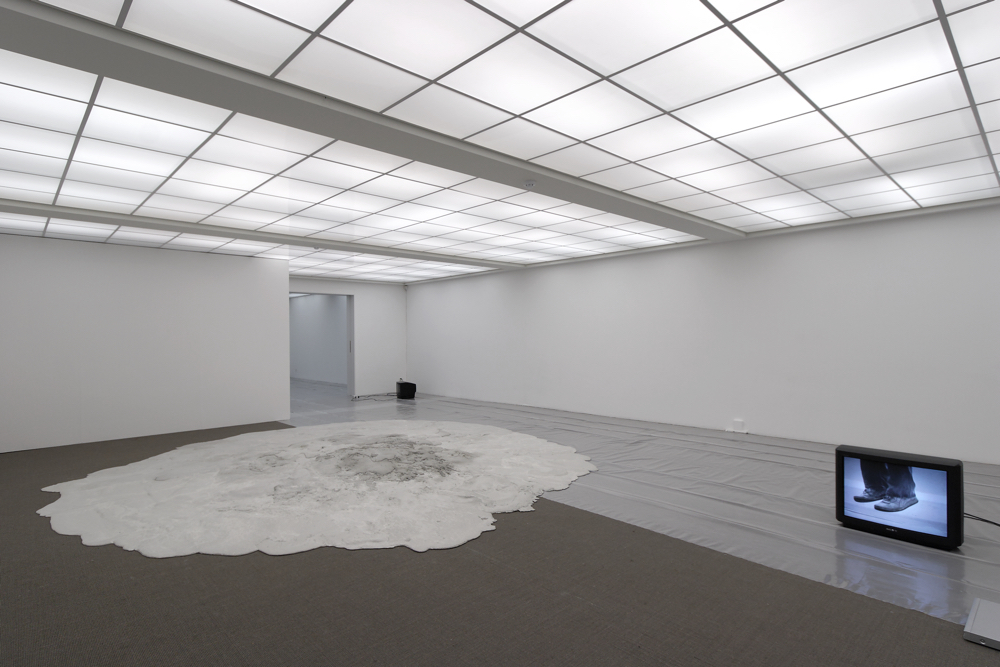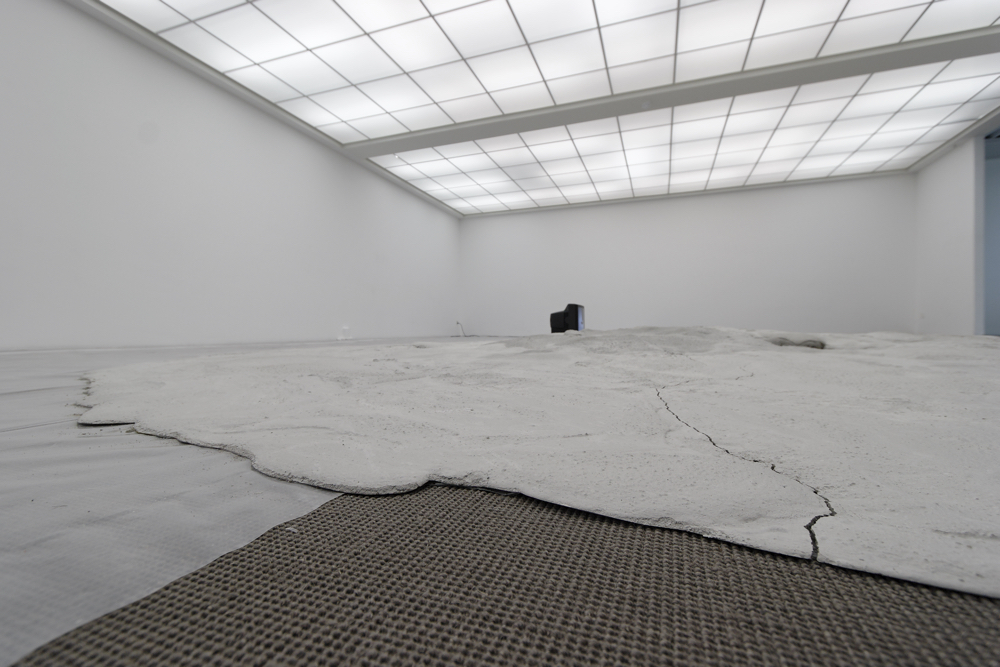Kilian Rüthemann
Flatland
19.1. —
11.3.2007


Kunsthaus Baselland presents the first institutional solo show of Kilian Rüthemann, an artist who graduated from the Academy of Design and Art in Basel in 2005.
With the title Flatland — originally used by Edwin A. Abott for his novel — the artist picks up on the expansion into a third dimension by adding a third one, a topic addressed in the book. In a very intelligent and innovative fashion, Rüthemann articulates sculpting processes and turns these into the content of his work. Just like an inhabitant of the fictitious planet Flatland succeeds in penetrating the Earth’s three-dimensional atmosphere, the artist manages to instigate a discourse on the power of presentation and the relationship between sculpting and physics. For his exhibition at Kunsthaus Baselland the artist displays a flat sculpture made of mortar spread out like a tortilla or a puddle beyond the edges of industrial sheeting that is laid out across half of the space. The choice of material emphasizes the sense of heaviness, of attachment, of clinging to the ground. Sculpting is traditionally seen as an activity that transgresses gravity and aims at capturing life in all its variety and motion. Rüthemann overcomes this gravity inherent in the process of creation by pouring bucketfuls of mortar across the floor. For a brief moment, therefore, the phenomenon of gravity is canceled: material ‘flies’. This lightness is contrasted with the process of removing material — the artist, in an effort to shape his artwork, strips off the hardened substance in certain places.
Another part of the exhibition consists of two monitors facing each other: One is wrapped in sheeting and shows a video of feet dangling in the air. The second monitor is turned off most of the time — except for those moments in which a timer triggers a switch-on impulse. The hissing sound this produces seems all of a sudden to breathe life into the contraption. For a brief moment, this act of switching on builds up a connection to the real world which stands in stark contrast to the endless images of hovering and wriggling feet displayed on the other side. While working with video and switch-on and switch-off mechanisms in these two monitors, he still bundles ideas relating to sculpting: The animation of what is essentially inanimate matter, the elimination and activation of gravity or its manual processing are the salient features of his artistic practice.
Text by Sabine Schaschl